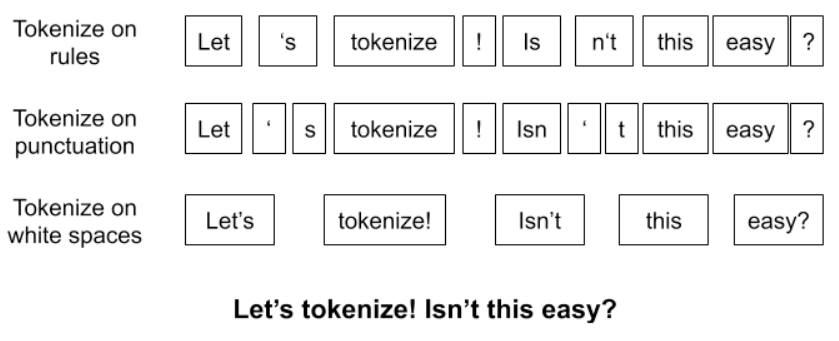Anyone who has ever tried to learn a language knows how difficult this is. In theory, you have to master the syntax, grammar, and vocabulary - but we learn rather quickly that in practice this also involves tone of voice, which words we use concurrently, and the complex meaning of our interactions.
Most businesses work with hundreds of written and spoken communication strings on a daily basis - tweets, emails, transcripts - all unstructured data that doesn't fit neatly into columns or rows. We rely on tools and techniques such as Natural Language Processing to move away from old-fashioned keyword-based interpretation towards a method of finding the cognitive meaning behind these words.
Needless to say - this helps us scale.
We've decided to shed some light on Natural Language Processing - how it works, what types of techniques are used in the background, and how it is used nowadays. We might get a bit technical in this piece - but we have included plenty of practical examples as well.
Let's hop in!
What is Natural Language Processing?
In short, Natural Language Processing or NLP is a branch of AI that aims to provide machines with the ability to read, understand and infer human language.
Natural Language Processing is the technology used to aid computers to understand natural human language.
This commonly includes detecting sentiment, machine translation, or spell check - often repetitive but cognitive tasks. Through NLP, computers can accurately apply linguistic definitions to speech or text.

But - every language has a certain level of ambiguity. Take the following sentences as an example:
“My husband is French”
“Excuse my French”
Both sentences use the word French - but the meaning of these two examples differ significantly.
Quite essentially, this is what makes NLP so complicated in the real world. Due to the anomaly of our linguistic styles being so similar and dissimilar at the same time, computers often have trouble understanding such tasks. They usually try to understand the meaning of each individual word, rather than the sentence or phrase as a whole.
Through Natural Language Processing techniques, computers are learning to distinguish and accurately manage the meaning behind words, sentences and paragraphs. This enables us to do automatic translations, speech recognition, and a number of other automated business processes.
Take a look at more NLP examples here.
Why is NLP so complicated?
While the benefits of NLP are clear, there are certain challenges we must address:
- The multitude of rules: Not only is human language ambiguous and complex, but we are also dealing with roughly over 6500 languages currently spoken in the world, each with its own linguistic rules.
- Uniformity: To start processing language, we must first transform it into a system that a computer can understand. Through Machine Learning (ML) algorithms, NLP identifies unstructured language and converts it into useful information that the machine can understand. This stage of NLP is called data pre-processing.
- Context: Natural Language Processing fundamentally works by understanding the hierarchy of linguistic diction between each word and converting it into a form that computers can interpret. Our languages are not simple. Words have multiple meanings, understood only by the difference in context.
- The tone of voice: Coding what sarcasm or irony is, and being able to detect it is extremely difficult.
How does NLP work?
NLP is not one static methodology. The process of manipulating language requires us to use multiple techniques and pull them together to add more layers of information. When starting out in NLP, it is important to understand some of the concepts that go into language processing.
It is no surprise that NLP uses the same techniques we know from linguistics. There are generally four steps to language processing:
- Morphology - how words are formed and their relationship to other words
- Syntax - how these words are put together in a sentence
- Semantics - how the meaning of words is revealed through grammar and lexical meaning
- Pragmatics - meaning of words in context
Each of these steps adds another layer of contextual understanding of words. Let's take a closer look at some of the techniques used in NLP in practice.
Natural Language Processing techniques
In most cases, the language we are aiming to process must be first transformed into a structure that the computer is able to read. In order to clean up a dataset and make it easier to interpret, syntactic analysis and semantic analysis are used to achieve the purpose of NLP.
Part-of-Speech Tagging
Using morphology - defining functions of individual words, NLP tags each individual word in a body of text as a noun, adjective, pronoun, and so forth. What makes this tagging difficult is that words can have different functions depending on the context they are used in. For example, "bark" can mean tree bark or a dog barking; words such as these make classification difficult.

We can address this ambiguity within the text by training a computer model through text corpora. A text corpora essentially contain millions of words from texts that are already tagged. This way, the computer learns rules for different words that have been tagged and can replicate that.
Another approach used by modern tagging programs is to use self-learning Machine Learning algorithms. This involves the computer deriving rules from a text corpus and using it to understand the morphology of other words.
Bag of Words
Within NLP, this refers to using a model that creates a matrix of all the words in a given text excerpt, basically a frequency table of every word in the body of the text.
Once this is achieved, training classifiers can now be used based on the frequency matrix. However, this approach does exclude semantic meaning and context.
Stop Word Removal
This is used to remove common articles such as "a, the, to, etc."; these filler words do not add significant meaning to the text. NLP becomes easier through stop words removal by removing frequent words that add little or no information to the text.
Lemmatization
Lemmatization is another useful technique that groups words with different forms of the same word after reducing them to their root form.
What this essentially can do is change words of the past tense into the present tense ("thought" changed to "think") and unify synonyms ("huge" changed to "big"). This standardization process considers context to distinguish between identical words.
Stemming
Stemming is quite similar to lemmatization, but it primarily slices the beginning or end of words to remove affixes. The main issue with stemming is that prefixes and affixes can create intentional or derivational affixes.
Although stemming has its drawbacks, it is still very useful to correct spelling errors after tokenization. Stemming algorithms are very fast and simple to implement, making them very efficient for NLP.
Tokenization
Quite simply, it is the breaking down of a large body of text into smaller organized semantic units by effectively segmenting each word, phrase, or clause into tokens.

Tokenization also allows us to exclude punctuation and make segmentation easier. However, in certain academic texts, hyphens, punctuation marks, and parentheses play an important role in the morphology and cannot be omitted. And needless to say - not all languages act the same.
Semantics
To carry out NLP tasks, we need to be able to understand the accurate meaning of a text. Semantics refers to the intended meaning of a text. This is an aspect that is still a complicated field and requires immense work by linguists and computer scientists.
With words that have multiple meanings, semantics becomes increasingly difficult. For example:
"Alice was down in the dumps last time I saw her."
"Brent dumps the garbage every night after dinner."
In this scenario, the word "dumps" has a different meaning in both sentences; while this may be easy for us to understand straight away, it is not that easy for a computer.
Computers lack the knowledge required to be able to understand such sentences. Sarcasm, irony, and humor are the hardest to decode.
Other techniques used for semantics include named entity recognition, word disambiguation, and natural language generation.
NLP use cases for business
With Natural Language Processing, we can achieve automation in an unprecedented manner. Some common examples of using NLP to simplify tasks include:
- Customer Support and Feedback: NLP can use data from surveys, product reviews, and social media to gain insights on your product, unlike ever before with sentiment analysis. NLP can automatically tag customer support tickets to the correct department and use chatbots to solve simpler queries.
- Fake News Filter: Researchers at MIT have been successful in classifying news as politically biased with the help of NLP.
- Social Media Analysis: NLP can help process both the sentiment and topic classification finetuned to your specific parameters for brand health and community building
- Email Filters: detect spam, define what urgent emails look like to your business, or route the right emails to the right department
- Survey Analytics: Conduct employee or customer feedback surveys and find trends automatically
NLP Limitations
If you're looking to build your own models, you should consider some of the costs associated with this.
Firstly, it takes a lot of time to train NLP models. Some models can take several weeks to showcase reliable results. So if you are working with tight deadlines, you should think twice before opting for an NLP solution - especially when you build it in-house.
More importantly, as with all ML algorithms, the results are only as good as the data on which the model is trained. It is impossible to achieve 100% reliability with NLP unless you have a clear process in mind. Moreover, NLP technology requires an immense amount of computing power, and artificial neural networks are not close to the efficiency of the human brain - yet
Due to the data-driven results of NLP, it is very important to be sure that a vast amount of resources are available for model training. This is difficult in cases where languages have just a few thousand speakers and have scarce data.
NLP tools & no-code solutions
If you want to get hands-on started with NLP, there are plenty of tools available online:
- IBM Watson
- Lexalytics
- Google Cloud NLP
- Clarabridge
- Amazon Comprehend
- Levity (no-code)
If you want to skip building your own NLP models, there are a lot of no-code tools in this space, such as Levity. With these types of tools, you only need to upload your data, give the machine some labels & parameters to learn from - and the platform will do the rest.

For example, performing a task like spam detection, you only need to tell the machine what you consider spam or not spam - and the machine will make its own associations in the context.
Get started with no-code NLP automation
Often, people rush to implement an NLP solution without truly understanding the possibilities or limitations of Natural Language Processing. This is why it is vital to plan an implementation after some research on NLP tools and available data. For an average business user, no-code tools provide a faster experimentation and implementation process.
If you're looking to get started in no-code AI & NLP automation, sign up to Levity now!
Disclaimer: While we know that this piece does not dive deep into the code & algorithms, we hope it's been a good place to start. If you are looking to develop more knowledge on NLP & AI, we recommend looking into Russell & Norvig's “Artificial Intelligence: A Modern Approach”




